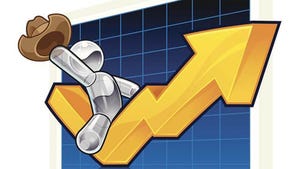How Does The Farmland Price Bubble Compare?
How do today’s values differ from bubbles of the past?
August 13, 2013

Historically low interest rates that followed the 2007-08 financial collapse have had a positive effect on U.S. net farm income and the price of farmland — but when interest rates move higher will that push income and land prices downward?
For some farmers, maybe, says Brian Briggeman, associate professor and director of the Arthur Capper Cooperative Center at Kansas State University.
But comparing present day scenarios to farmland bubbles of the past, there is a difference in the debt picture of many farmers, the former economist for the Federal Reserve Bank of Kansas City, said at the Mississippi Farm Bureau Federation’s joint soybean, corn, wheat, and feed grains advisory committee meeting at Grenada, MS.
“These very low interest rates have been the primary driver of net farm income, and they are certainly an important factor when looking at agriculture as an investment, the price of farmland, and the effect on the value of the dollar and exchange rates by making our goods more affordable in the global marketplace.
“Interest rates have two important impacts on farmland values — they affect expected farm income and capitalization rates, which have an impact on farmland values.”
To read the entire article, click here.
You might also like:
Product Update: 13 New Tractors For Your Ranch
80+ Summer Grazing Scenes From Readers
5 Experts Predict Cattle industry's Future
NEW Cattle Cartoons Add Humor To Ranch Life
You May Also Like



